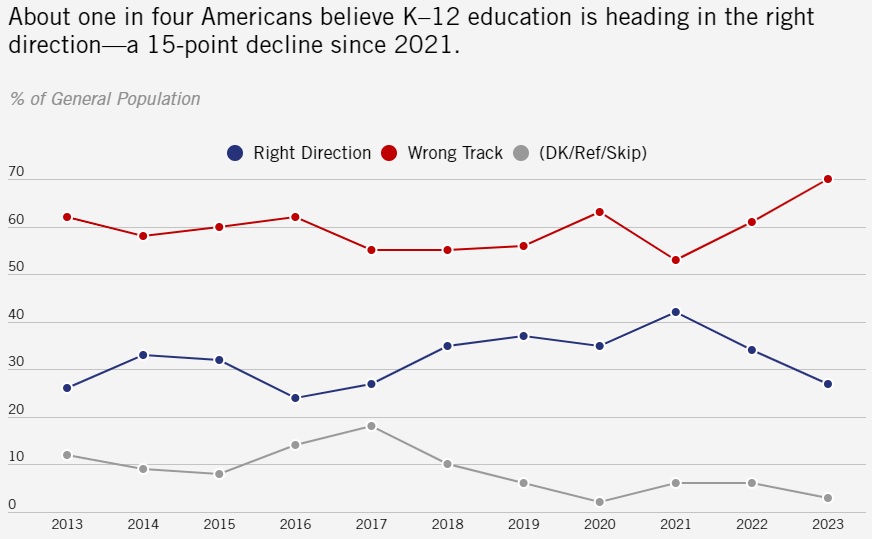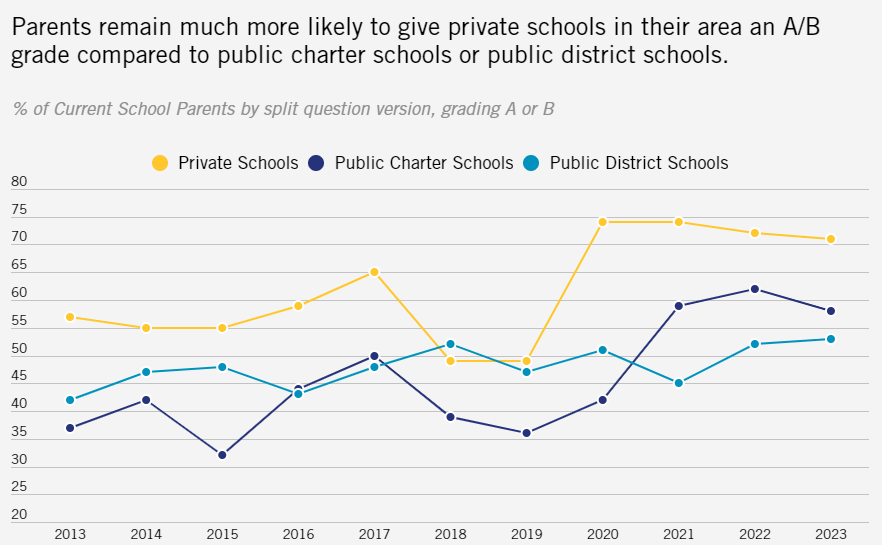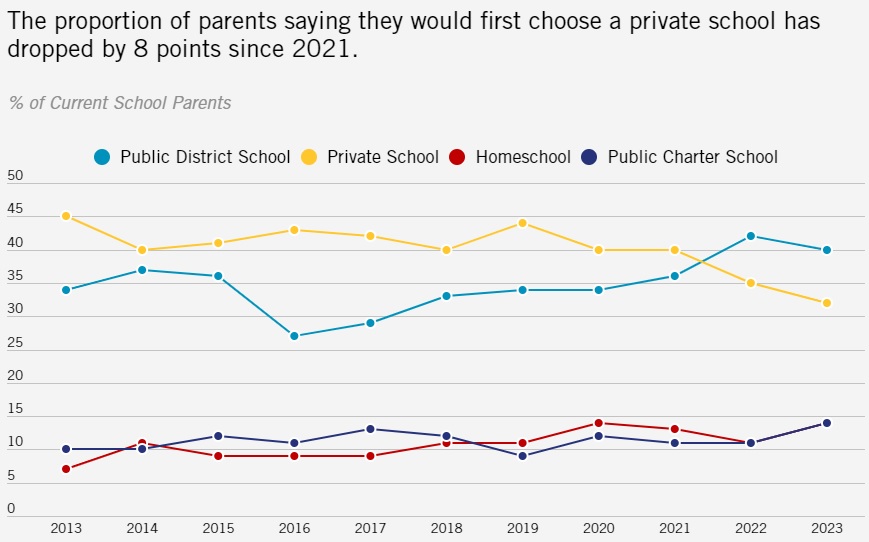EdChoice is out with its latest Schooling in America Survey, one of the most comprehensive snapshots of what Americans think of their schools.
It's packed with interesting data points to dig into. Here are three that caught my eye.
1. Parents appear less pessimistic than the public about the state of schools
This trend shows up in a variety of different surveys about public sentiment in education. Public schools have not been immune to the declining public sentiment toward a wide variety of institutions.

Parents with children attending school also take a dim view, but their pessimism is less pronounced (and not intensifying as rapidly).

2. Parents choose different learning options for different reasons.
The survey asks parents with children in different learning arrangements what they value. The results aren't necessarily surprising, but they underscore the fact that families select their children's learning arrangements for different reasons.
Private and charter school parents place more value on academic quality than parents who chose other learning options. Homeschoolers place the most value on individualized learning. Parents sending their children to district-run public schools place greater value on access to a learning environment close to where they live or work.
In other words, parents appear to be opting into learning environments that align with their priorities.
One striking trend, explored in greater depth by EdChoice's research director, Mike McShane, is the fact that homeschoolers appear to prioritize safety and fear school violence more than other parents.

3. Parents' preferences are shifting, slowly but surely
EdChoice's surveys have often shown that parents prefer private schools to other learning options and that they hold their local private schools in higher esteem than district or charter public schools.

At the same time, private schools' status as most parents' first choice has slipped below district-run public schools. Indeed, over the past decade, the percentage of parents who rate private schools as their first choice has dipped by double-digits. The percentage favoring charter and district-run public schools has crept upward. And the percentage who say they favor homeschooling, while still low overall, at 14 percent, has doubled since 2013.

Short-term shifts in public opinion can grab fast headlines but carry little significance. The trends that matter are those, like the gradually improving public sentiment toward homeschooling, that hold over longer stretches of time.